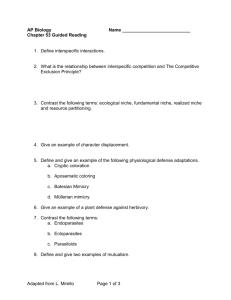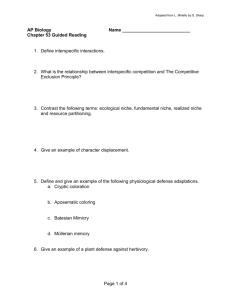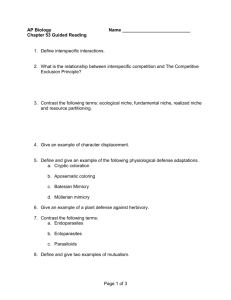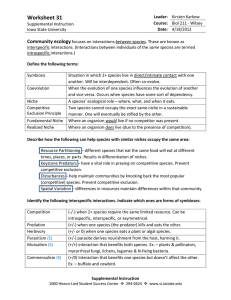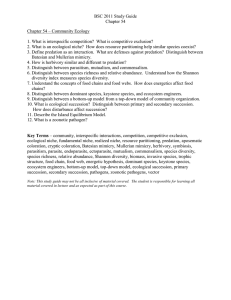1. Define interspecific interactions. AP Biology
advertisement
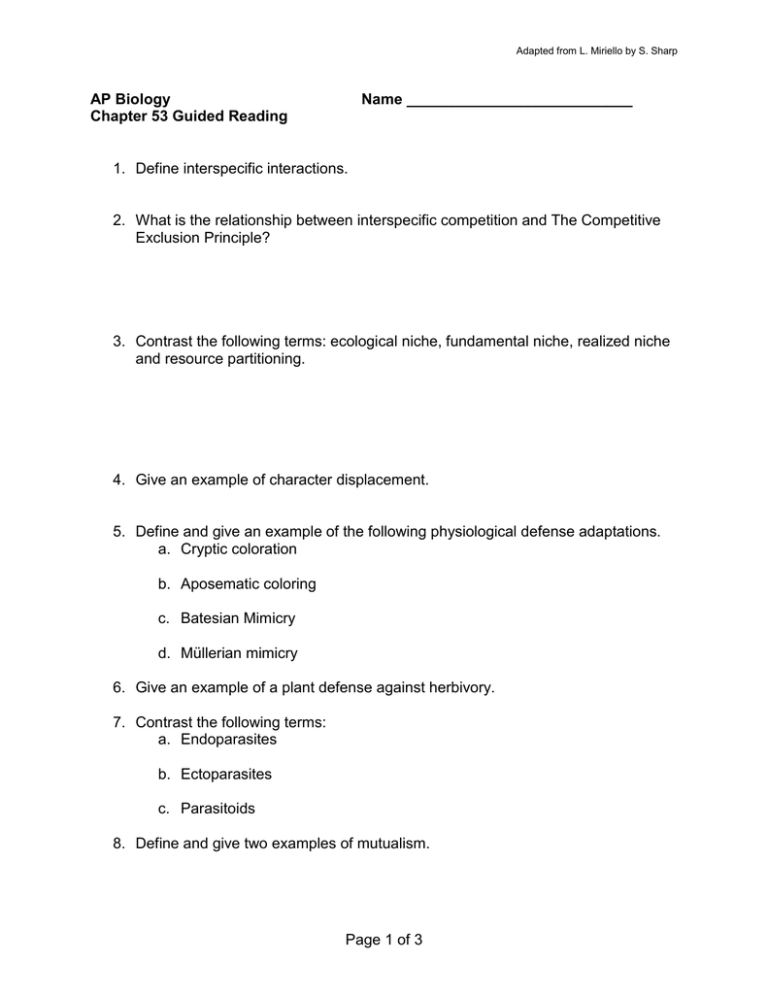
Adapted from L. Miriello by S. Sharp AP Biology Chapter 53 Guided Reading Name ___________________________ 1. Define interspecific interactions. 2. What is the relationship between interspecific competition and The Competitive Exclusion Principle? 3. Contrast the following terms: ecological niche, fundamental niche, realized niche and resource partitioning. 4. Give an example of character displacement. 5. Define and give an example of the following physiological defense adaptations. a. Cryptic coloration b. Aposematic coloring c. Batesian Mimicry d. Müllerian mimicry 6. Give an example of a plant defense against herbivory. 7. Contrast the following terms: a. Endoparasites b. Ectoparasites c. Parasitoids 8. Define and give two examples of mutualism. Page 1 of 3 Adapted from L. Miriello by S. Sharp 9. Define and give two examples of commensalism 10. Is the evolution of Batesian mimicry an example of coevolution, support your answer? 11. Provide an example that correctly uses the terms species diversity, species richness and relative abundance correctly. 12. What is the difference between a food chain and a food web? Which provides a more “full” ecological picture and why? 13. Write the terms and explain the two hypotheses that address the question as to why food chains are relatively short. 14. How do you characterize the dominant species? How is this different from the keystone species? 15. Compare and contrast the bottom-up model with the top-down model? 16. What is the relationship between the term disturbance and the intermediate disturbance hypothesis? Page 2 of 3 Adapted from L. Miriello by S. Sharp 17. Compare and contrast primary and secondary succession. 18. Define evapotranspiration. 19. What is the Island Equilibrium Model and how does it help us better understand ecological changes? 20. What is the integrated hypothesis and how does it relate to the individualistic hypothesis? Page 3 of 3
